Postscript was designed for making marks on some medium like paper or film, not raster graphics. As such it doesn't have a background color per se that can be set to given color because that would normally be the color of the paper or unexposed film being used.
In order to simulate this you need to draw a rectangle the size of the canvas and fill it with the color you want as the background. I didn't see anything in the turtle module to query the canvas object returned by getcanvas() and the only alternative I can think of is to read the turtle.cfg file if there is one, or just hardcode the default 300x400 size. You might be able to look at the source and figure out where the dimensions of the current canvas are stored and access them directly.
Update:
I was just playing around in the Python console with the turtle module and discovered that what the canvas getcanvas() returns has a private attribute called _canvas which is a <Tkinter.Canvas instance>. This object has winfo_width() and winfo_height() methods which seem to contain the dimensions of the current turtle graphics window. So I would try drawing a filled rectangle of that size and see if that gives you what you want.
Update 2:
Here's code showing how to do what I suggested. Note: The background must be drawn before any other graphics are because otherwise the solid filled background rectangle created will cover up everything else on the screen.
Also, the added draw_background() function makes an effort to save and later restore the graphics state to what it was. This may not be necessary depending on your exact usage case.
import turtle
def draw_background(a_turtle):
""" Draw a background rectangle. """
ts = a_turtle.getscreen()
canvas = ts.getcanvas()
height = ts.getcanvas()._canvas.winfo_height()
width = ts.getcanvas()._canvas.winfo_width()
turtleheading = a_turtle.heading()
turtlespeed = a_turtle.speed()
penposn = a_turtle.position()
penstate = a_turtle.pen()
a_turtle.penup()
a_turtle.speed(0) # fastest
a_turtle.goto(-width/2-2, -height/2+3)
a_turtle.fillcolor(turtle.Screen().bgcolor())
a_turtle.begin_fill()
a_turtle.setheading(0)
a_turtle.forward(width)
a_turtle.setheading(90)
a_turtle.forward(height)
a_turtle.setheading(180)
a_turtle.forward(width)
a_turtle.setheading(270)
a_turtle.forward(height)
a_turtle.end_fill()
a_turtle.penup()
a_turtle.setposition(*penposn)
a_turtle.pen(penstate)
a_turtle.setheading(turtleheading)
a_turtle.speed(turtlespeed)
s = turtle.Screen()
s.bgcolor("orange")
bob = turtle.Turtle()
draw_background(bob)
ts = bob.getscreen()
canvas = ts.getcanvas()
bob.circle(250)
canvas.postscript(file="turtle.eps")
s.exitonclick() # optional
And here's the actual output produced (rendered onscreen via Photoshop):


